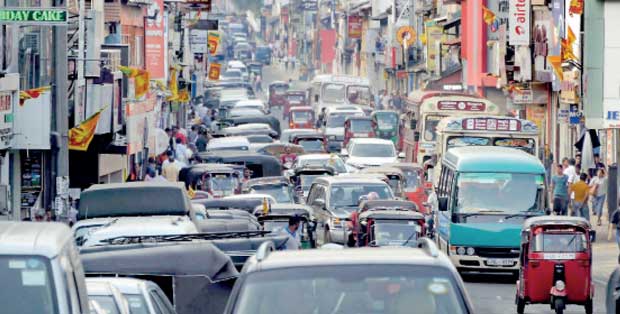09 Feb 2018 - {{hitsCtrl.values.hits}}

 The cities in emerging markets are driving for the most significant economic growth regionally and globally. Research projections show that 440 emerging market cities will account for close to half of the expected global gross domestic product growth between 2010 and 2025.
The cities in emerging markets are driving for the most significant economic growth regionally and globally. Research projections show that 440 emerging market cities will account for close to half of the expected global gross domestic product growth between 2010 and 2025.
The nations are focusing on building globally competitive cities, whereas many cities in the world have well embraced with the concept of city branding in the transformation of their cities.
Branding of Sri Lankan cities, more specifically Colombo, is vital to make them more competitive, smart and sustainable. Thus, the article emphasizes the need for branding of cities and discusses on initiating a city branding strategy.
Emergence of branding
Branding has a long history. In Greek and Roman times, branding was used as identification or trademark for shops and craftsman signs. The word ‘brand’ originated from the Old Norse word ‘brandr’, which means to burn, referring to branding of cattle and marking one’s property.
The reflection of the globalization and rapidly increasing competition have resulted the organisations paying more attention to branding. The concept of branding as a marketing management theory and application got well evolved and the brands are becoming the most important asset of the organisations.
Branding could be explained as the marketing management process to build and manage a company’s reputation; it consists of designing, planning and communicating the brand’s name, identity and delivering value to stakeholders. Brands are created in the minds of consumers and represent the consumer’s impressions and feelings about a product or service and are judged by their visibility, advertising and actions.
Marketing management on building cities
In the competitive and globalized world, not only the nations but also cities have to compete with other nations or cities for their share of the world’s consumers, tourists, businesses, investment, capital, respect and for gaining attention.
Indeed, in the recent years, the cities have generally been viewed as brands and many cities in the world have actively engaged in building and managing their city brands.
The developments in the marketing management concept and techniques, particularly the product branding, are applied to cities in branding themselves and thereby building their image and identity in the global stage.
Place branding expert Simon Anholt pointed out that people think about cities in terms of qualities or attributes, a promise or some kind of story. Paris is romance, Milan is style, New York is energy, Tokyo is modernity or Barcelona is culture.
Of course, the world-famous slogan ‘I love New York’, ‘Iamsterdam’ or taglines of ‘Uniquely Singapore’ or ‘Your Singapore’ are the result of city branding initiatives.
Role of city branding
City branding is not simply the communications strategy, a tagline, visual identity, logo or an advertising campaign. It is a strategic process for developing a long-term vision for the city, enabling a city to build on its existing strengths, make sense out of its current identity and build a future identity and the image.
Brand identity indicates what a brand stands for, whereas the city’s brand image is the sum of beliefs, ideas and impression on the city and reflection of how people experience it and what the city is known for, which ultimately influences and shapes positive perceptions of the cities.
Anholt’s city brand hexagon is a helpful tool for guiding the branding effort of local policymaking. It highlights six components, which will ultimately influence the judgment of the city’s brand.
Conclusion
Of course the newly-elected mayors of the cities will have to act more likely as brand managers in building the city’s brand image and identity which is aligned with unique and unitary Sri Lankan identity.
As the custodian of the city brands, the mayors may have to bring together various stakeholders, including the Tourist Board, universities, Transport Ministry, housing, urban development and other governmental agencies, consultants and other relevant stakeholders agreeing on the vision for their city brand.
It necessitates initiating a strategic city branding plan and policies and thereby making their cities competitive, smart and sustainable. Private and public partnership is also vital in making the plan into action.
Interestingly, the marketing management discipline has well expanded and its application is not limited in building world-class organisations but also used in creating world-class cities and nations uplifting the quality living standard.
(Zahran Sikkanther Lebbe is a marketing management professional and an Assistant General Manager of a leading organisation. He is a member of Chartered Institute of Marketing-UK and SLIM (SL) as well as graduate of the Wayamba University. Feedback can be shared at Zahranlebbe
@gmail.com)
10 Jan 2025 1 hours ago
10 Jan 2025 1 hours ago
10 Jan 2025 3 hours ago
10 Jan 2025 3 hours ago
10 Jan 2025 3 hours ago